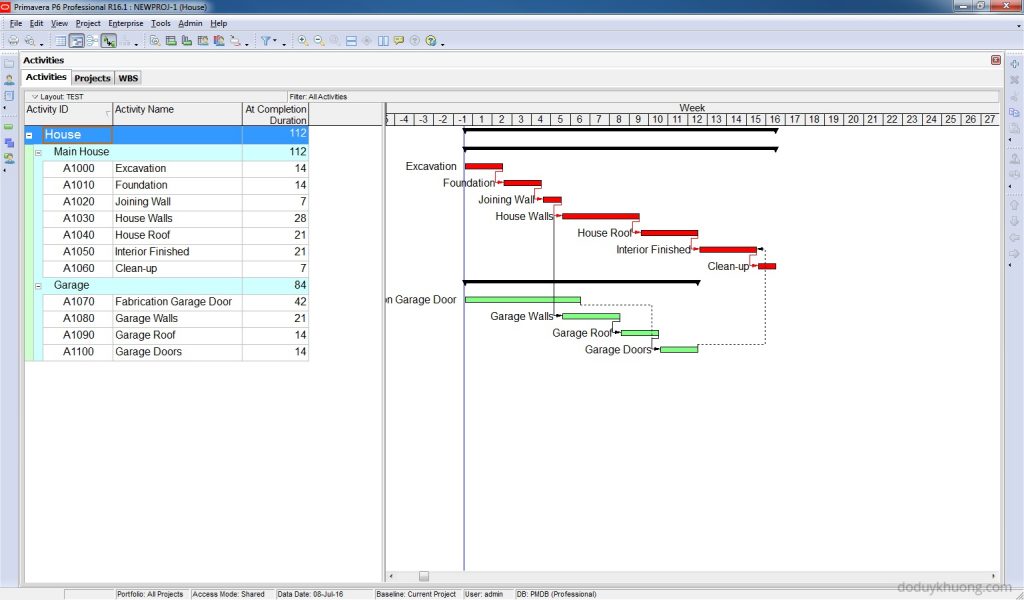A Schedule Time Impact Analysis is a method used to determine the extent of impact from potential delay in the construction process. This schedule analysis method involves inserting additional activities indicating delays or changes into an updated schedule representing progress up to the point when a delay event occurred to determine the impact of those delay activities.
Types of Delays
Delays can be categorized into two main areas, Excusable Delays and Non-Executable Delays.
Excusable delays occur when the affected party is allowed to claim for a time extension, compensation, or both. Meanwhile, non-excusable delays are delays that the contractor or the affected party needs to bear responsibility for.
Consider a simple project with the “As Planned Schedule”, illustrated below:

First-month update:
There is 21 days delay on Excavation due to an unforeseen site condition.

Second-month update:
There is no delay.

Third-month update:
There are two concurrent delays: 1- The owner changed the house design (14 days), and 2- Subcontractor left the job (21 days)
Therefore, 14 days are charged to the owner and 7 days are charged to the contractor.

Forth-month update:
The contractor caused a delay in “Garage Walls” but this activity was not on the critical path.
As long as the delay is within available float there is no effect on the final completion date.

Fifth-month update:
The owner caused a 28-day delay in “Garage Doors”.
This delay only affects 7 days in the critical path. The rest of 21 days delay was absorbed by the available float. Therefore, there will be only 7 days of “excusable compensable delay.”

Last month update:
There is no delay this month.

The overall Schedule Time Impact Analysis report is outlined below:

Considering the types of delays experienced throughout the project, there is: 28 days excusable and compensable delay (for time and cost), 14 days time excusable but non-compensable, and 7 days non-excusable time and non-compensable.
I hope this tutorial provided clear instructions on how to perform Schedule Time Impact Analysis in Primavera.
If you have any questions, please post them down below. I will make sure that I will go through as many questions as I can and assist you in answering your questions.
Interested in deep-dive training on this topic?
If you are interested in further exploring the TIA and other forensic schedule delay analysis methodologies, check out the Forensic Schedule Delay Analysis online training we offer at Project Control Academy. It is a comprehensive course aligned with the AACE Forensic Schedule Analysis Recommended Practice. What’s more, the course is developed and instructed by one of its primary authors, Chris Carson.
You have already invested your time and obtained great information out of this blog post. Now you have the choice to take great action, to consolidate and expand that knowledge in structured sessions. And we can’t wait to see you there!
About the Author, Khuong Do
 Khuong Do is a Project Planner in Civil Engineering, Transportation, and Oil & Gas Industry. He has worked as a Primavera Consultant Specialist since 2006 and willing to share his passion for Primavera through lots of Tips & Tricks on his personal blog.
Khuong Do is a Project Planner in Civil Engineering, Transportation, and Oil & Gas Industry. He has worked as a Primavera Consultant Specialist since 2006 and willing to share his passion for Primavera through lots of Tips & Tricks on his personal blog.
He holds a Civil Engineering degree and a Bachelor of Information Management systems. Now he is working in Petronas RAPID project, one of the biggest Refinery and Petrochemical complex, in Pengerang – Malaysia



























